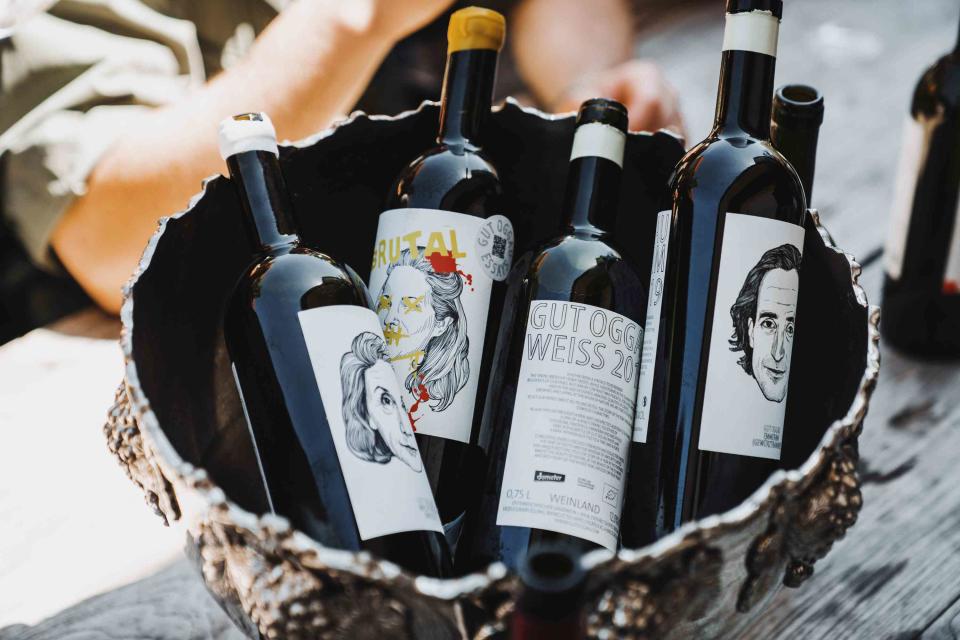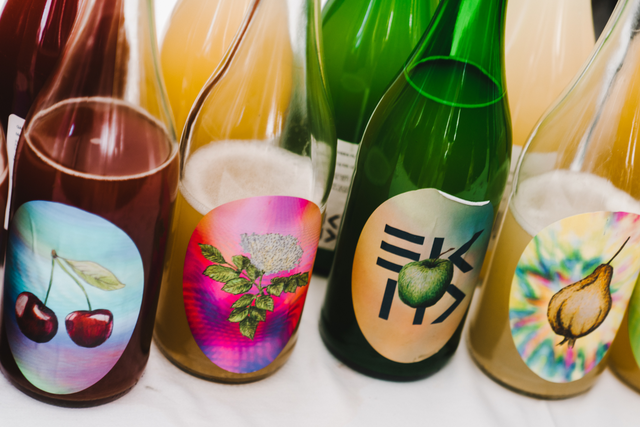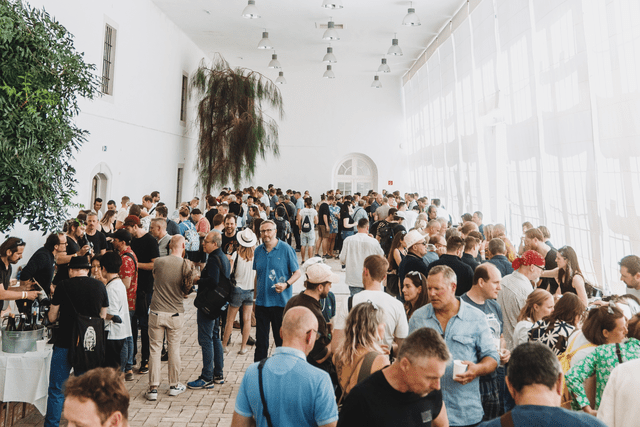We've Officially Reached Peak Natural Wine Fair
European natural wine fairs are making their U.S. debuts in the hopes of finding success that still eludes them in local markets.

As restrictions on travel eased up and the world gradually awoke from its pandemic-induced slumber, natural wine importer Alvaro de la Viña found himself busy with organizing an intimate trip to Cadiz, Spain to introduce American consumers and buyers to the producers in his portfolio. It was a successful operation, but Alvaro, who had seen the immutable enthusiasm around natural wine fairs in the United States like RAW Wine, a multi-day tasting extravaganza for trade and consumers attracting almost 150 winemakers from Itata, Chile to Imereti, Georgia, found that he simply craved more.
"RAW brought that European model of presenting wines in a salon to the states and has done an incredible thing for natural wine as a whole," de la Viña says. "But we're small inside of a big fair like RAW, and depending on the year, we'll have between just five or ten producers [from Spain]." Enticed by the chance to hold visitors' focus on wines from his home region, de la Viña created Viniesta, a natural wine (and food) fair that will take place on November 8 in Brooklyn. While the fair's first iteration only features producers imported by Selections de la Viña, the goal is to expand to other natural Spanish winemakers and become a major production in the vein of Spain's Great Match, an annual Spanish food and wine festival organized by the Trade Commission of Spain — but on the less commercial side. "We want to show another side of Spanish wine," says de la Viña.
Karakterre, another regional wine salon, is also making its American debut this November. Founder Marko Kovac has been organizing the Central and Eastern European natural wine fair for a decade, and felt a strong economic motivation to bring it stateside. "People in Slovakia, Hungary, and Austria are used to drinking wine that is produced in a conventional style," he explains. "There's more success for small, younger producers making low-intervention wines in the United States."
Kovac says many of the producers he works with for Karakterre have been slow and shy in their growth, chiefly due to limited success in their local markets. He anticipates that the fair's American success will prove to that new generation of producers that making wine differently is a way to make a living.
While bridging the gap between consumers and producers is a core motivator for regional festivals to make their way to the United States, there's also matchmaking at play. "Most producers — even the smallest, youngest ones — walk away with an importer or distributor after the salon," he explains. "We function as a family. A grower will call us and ask if there's someone in Italy or Luxembourg who will import their wines, and we connect them."

Isabelle Legeron, founder of RAW Wine, has seen natural festivals lead to tangible financial results for small producers. "People now see that it is possible to produce wine naturally, that the math adds up and that the result is not only delicious, long-lived and sought after, but it is better for the well-being of everyone involved — plants, people and planet," she explains. "This in turn has led to a proliferation of growers and makers, and of course in their routes to market — lots of new importers, distributors, restaurants, bars, and of course, other wine fairs."
While New York City is an obvious place for European regional fairs to make their American debuts (despite the success of natural wine fairs in other parts of the U.S., like San Diego's Nat Diego and Austin's Wild World) Kovac's decision to host the inaugural American Karakterre in Rockefeller Center as opposed to a warehouse in Queens or Brooklyn (the latter of which is home to beloved natural wine havens including but certainly not limited to The Four Horsemen, and the Bushwick outpost of the Ten Bells) is another step to show producers how mainstream their wines can be. "We want these wines to reach a broader audience of consumers, not just people in the know or people who live in Brooklyn," he says.
There are numerous reasons the American natural wine fair is worth the trek from across the country, or, in some cases, an ocean. Lane Nieset, a Paris-based food and travel writer, plans to head to New York City this November for both Karakterre and Viniesta. "Wine is already such a connector and unifying factor, but with natural wine, it's like knowing your farmer at the market — it feels much more personal and intimate," she says.

Meanwhile, Claire Cerda, caviste at Ordinaire wine bar in Oakland, California, loves events like RAW for the opportunity to share in milestones with budding winemakers. "I love the infectious spirit that comes from producers pouring their first couple of vintages and watching them stand side by side or across the table from more seasoned producers," she says.
Zev Rovine, a New York City-based importer and distributor of natural wines, attends roughly 25 fairs each year and calls them essential to finding new winemakers to work with, as well as "having small moments" with winemakers already in his portfolio. He finds the specialization of American natural wine fairs especially interesting given how different these events are across the pond. "In Europe, they're attended almost exclusively by people who work in wine and they are networking moments and ways for winemakers to see lots of clients and taste with them in one day…In the US, there are a lot more consumers who come and it can be treated as a day of fun, instead of a day of work," he explains.
"It's a great way to get natural wine more exposure, and to engage with people that actually drink the wines. And for attendees, it's a cool opportunity to meet the people that make their favorite wines."
Tickets for Viniesta and Karakterre's American fairs are now on sale (as are tickets to RAW's November fair, its 4th in NYC), and attendance to both events will run you less than $150. It's a strategic move on the part of the regional wine fair organizers, who know that getting bodies in the door — and planting the seeds for new relationships between producers and consumers, buyers, and importers — is worth more than an extra 20% or 30% profit on ticket prices. "$55 is the price of, what, two glasses of wine with tip at a wine bar in Brooklyn?" says Alvaro, laughing. "We're trying to make this accessible and lasting."
false

